AMD EPYC 7282 Benchmarks
For this exercise, we are using our legacy Linux-Bench scripts which help us see cross-platform “least common denominator” results we have been using for years as well as several results from our updated Linux-Bench2 scripts. Starting with our 2nd Generation Intel Xeon Scalable benchmarks, we are adding a number of our workload testing features to the mix as the next evolution of our platform.
At this point, our benchmarking sessions take days to run and we are generating well over a thousand data points. We are also running workloads for software companies that want to see how their software works on the latest hardware. As a result, this is a small sample of the data we are collecting and can share publicly. Our position is always that we are happy to provide some free data but we also have services to let companies run their own workloads in our lab, such as with our DemoEval service. What we do provide is an extremely controlled environment where we know every step is exactly the same and each run is done in a real-world data center, not a test bench.
We are going to show off a few results, and highlight a number of interesting data points in this article.
Python Linux 4.4.2 Kernel Compile Benchmark
This is one of the most requested benchmarks for STH over the past few years. The task was simple, we have a standard configuration file, the Linux 4.4.2 kernel from kernel.org, and make the standard auto-generated configuration utilizing every thread in the system. We are expressing results in terms of compiles per hour to make the results easier to read:
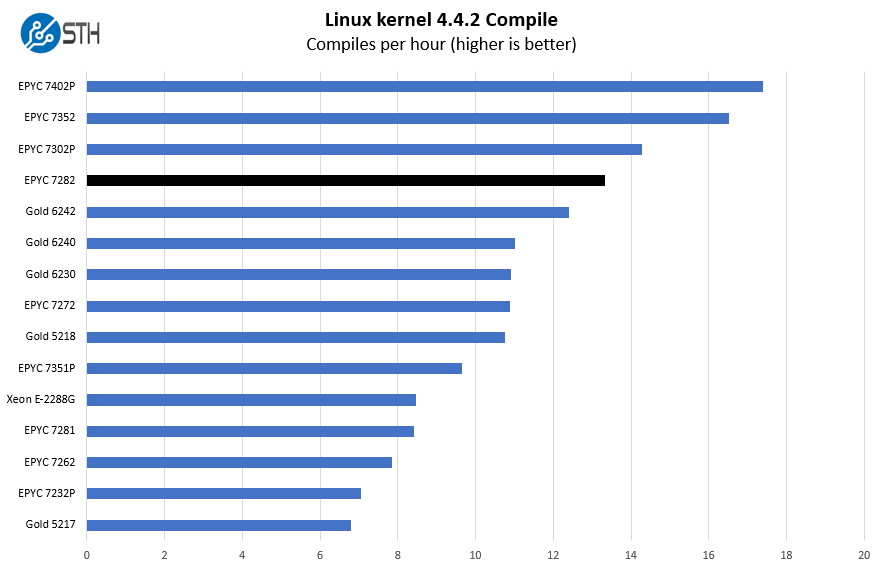
In our Linux Kernel Compile benchmark we see performance that is still very good for this class of processor at $650. There is a large gap between this chip and the AMD EPYC 7232P which is much more than one may expect given the price delta.
c-ray 1.1 Performance
We have been using c-ray for our performance testing for years now. It is a ray tracing benchmark that is extremely popular to show differences in processors under multi-threaded workloads. We are going to use our 8K results which work well at this end of the performance spectrum.
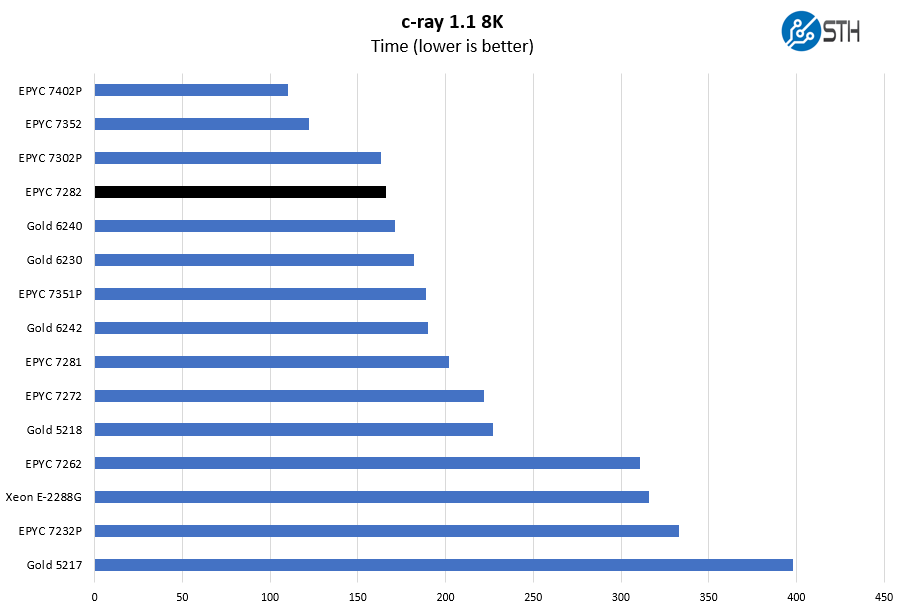
AMD’s architecture performs very well on these tests. One will notice that this is considered a lower-end part in the AMD stack but it also offers nice advantages over the previous-gen AMD EPYC 7281.
7-zip Compression Performance
7-zip is a widely used compression/ decompression program that works cross-platform. We started using the program during our early days with Windows testing. It is now part of Linux-Bench.
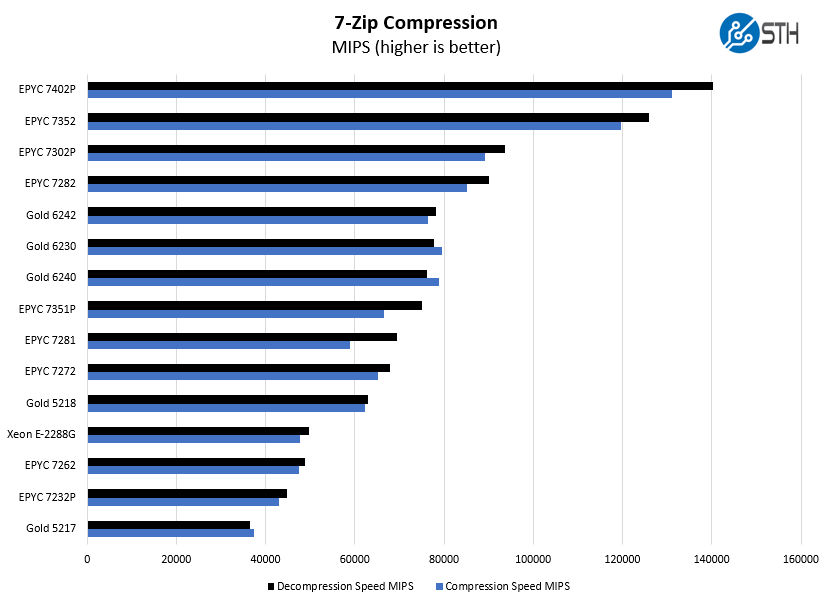
The performance here is just beyond the Intel Xeon Gold 6230, which is a great result. This review was written well before the new Big 2nd Gen Intel Xeon Scalable Refresh. We have now started testing the updated SKUs but price-wise this falls between the Silver 4210R and Silver 4214R. We did not even have the original Xeon Silver SKUs on our charts.
NAMD Performance
NAMD is a molecular modeling benchmark developed by the Theoretical and Computational Biophysics Group in the Beckman Institute for Advanced Science and Technology at the University of Illinois at Urbana-Champaign. More information on the benchmark can be found here. With GROMACS we have been working hard to support AVX-512 and AVX2 supporting AMD Zen architecture. Here are the comparison results for the legacy data set:
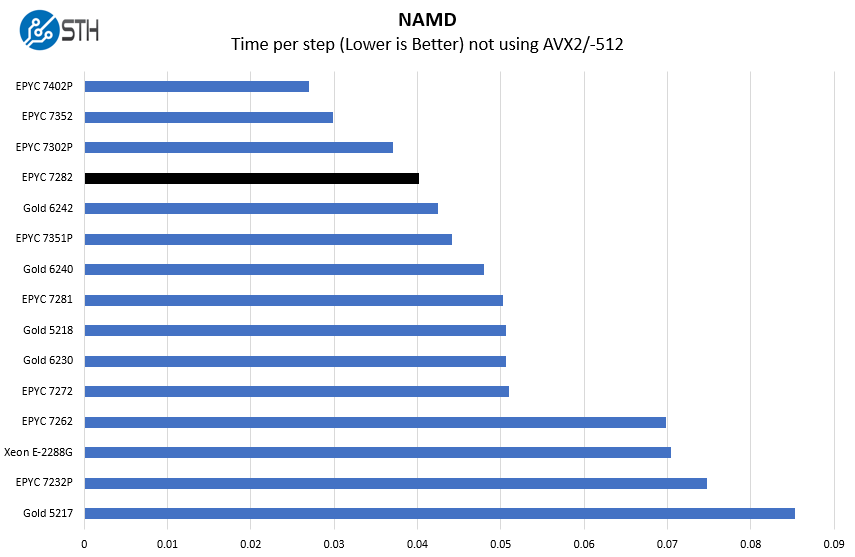
In these tests, we see the AMD EPYC 7302P perform better across the board. For single-socket applications, we think that is the better performance part. On the other hand, the EPYC 7282 costs less for those who are more power and price sensitive.
OpenSSL Performance
OpenSSL is widely used to secure communications between servers. This is an important protocol in many server stacks. We first look at our sign tests:
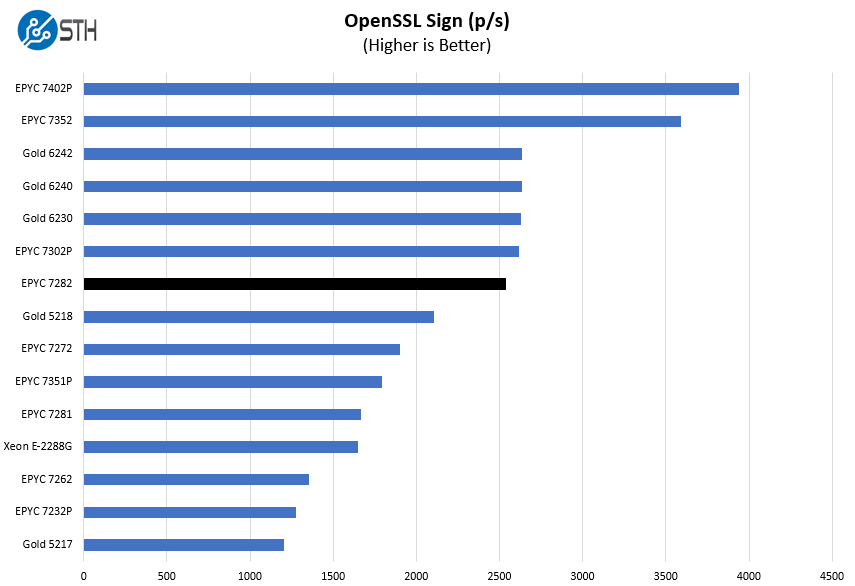
Here are the verify results:
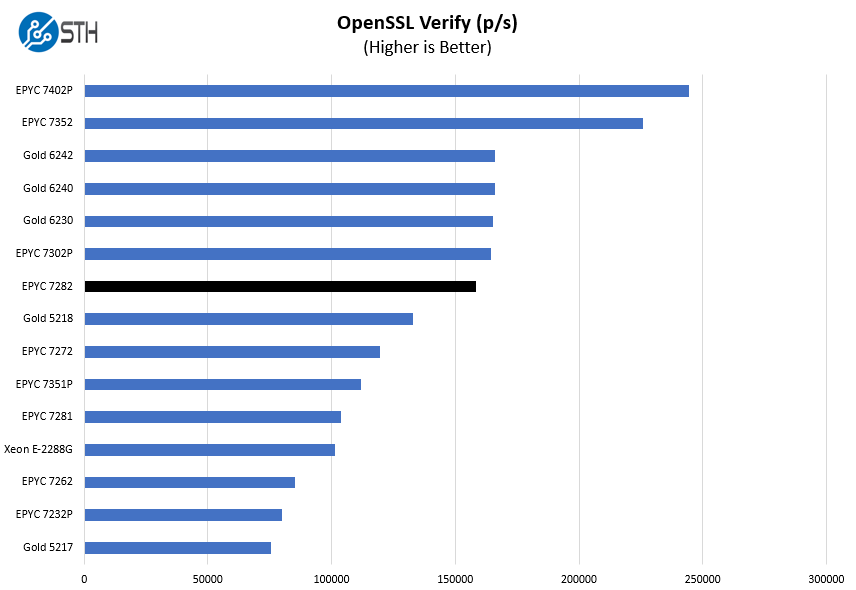
We wanted to point out here a very nice performance bump between this and the AMD EPYC 7272, a 12-core part. AMD has much larger SKU-to-SKU performance jumps than Intel which has more SKUs with smaller performance deltas.
UnixBench Dhrystone 2 and Whetstone Benchmarks
Some of the longest-running tests at STH are the venerable UnixBench 5.1.3 Dhrystone 2 and Whetstone results. They are certainly aging, however, we constantly get requests for them, and many angry notes when we leave them out. UnixBench is widely used so we are including it in this data set. Here are the Dhrystone 2 results:
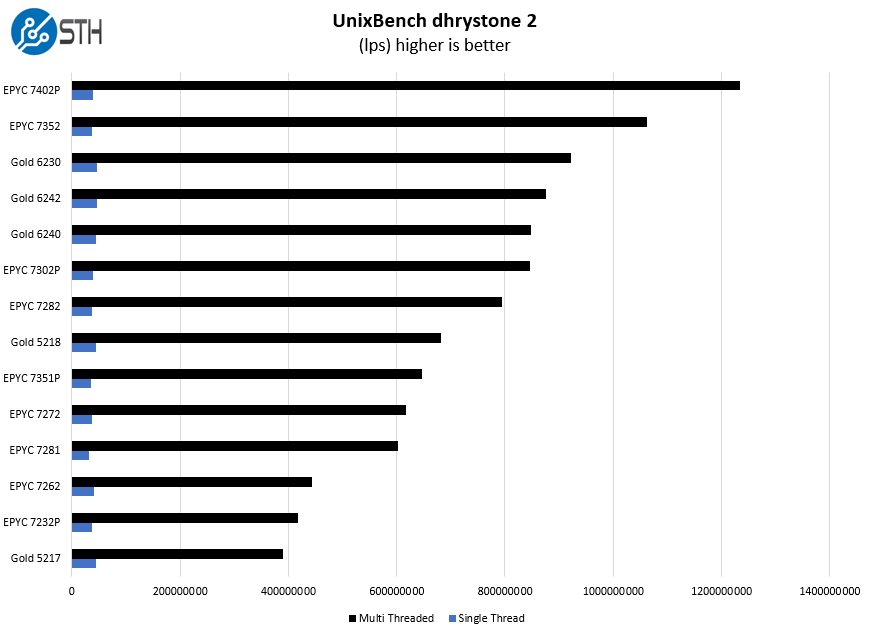
Here are the whetstone results:
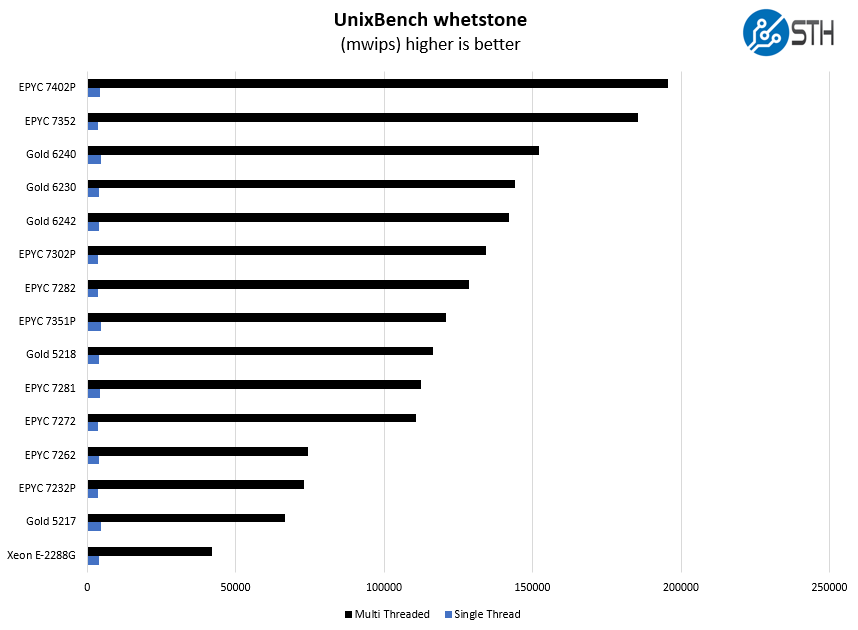
In most of our tests, the AMD EPYC 7351P is outpaced by the newer EPYC 7282. The generational performance gains are very impressive here which means newer parts are easily surpassing a SKU or two higher in the previous generation.
Chess Benchmarking
Chess is an interesting use case since it has almost unlimited complexity. Over the years, we have received a number of requests to bring back chess benchmarking. We have been profiling systems and are ready to start sharing results:
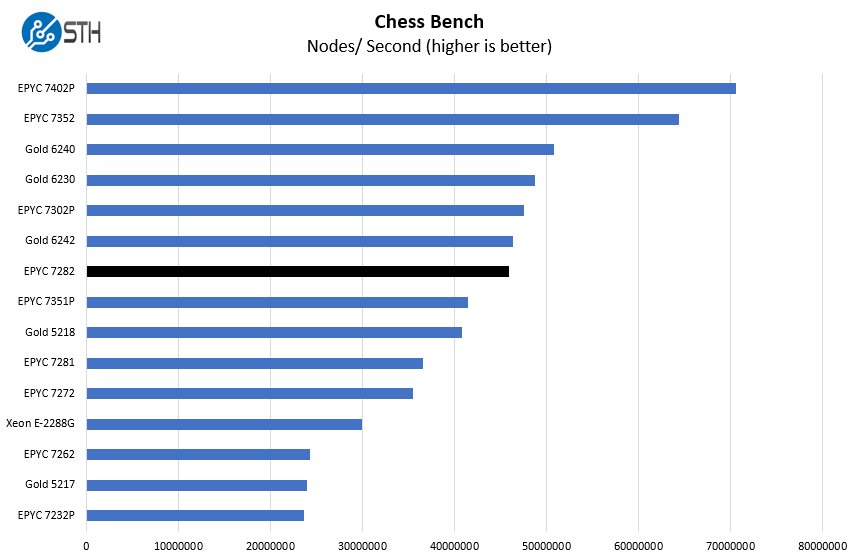
Here we see the Intel Xeon Gold 6242 start to pull ahead. Although there is a large price delta, this will be important as we start to publish our “Xeon refresh” series of reviews and look at other 16-core Xeon chips such as the Xeon Gold 6226R.
Next, we are going to look at the AMD EPYC 7282 market positioning before moving to our final words.




It’d be very nice to have some Threadrippers in the charts…
Hello,
i am a bit confused about the power consumption of the 7282 vs 7302p. Why is the 7302p so much better then the lower TDP 7282? I would have expected it the other way arround.
regards
John, you mention “This is not an enormous power burden on a rack even with 16 cores. In many systems built around these CPUs, the peripherals such as SSDs, accelerators, and NICs will use more power than the CPUs. ” on first page, but it would be good if you include “fans” there too. For example I see this tyan is using 2 fans. If those are like in my tyan, then they are screamers and every consume >55W which means just 3 fans have higher power consumption than the CPU itself.
So telling power consumption of whole box is nearly meaningless number if you do not mention precisely what components and with what power consumption exactly where inside the box.
Otherwise nice article!
The power consumption benchmark seems to be off, it doesn’t make sense that it would be higher than the 7302P, and others have reported much lower values. See here: https://forums.servethehome.com/index.php?threads/power-usage-of-amd-epyc-7282-vs-7302p.32478
Come fast reply